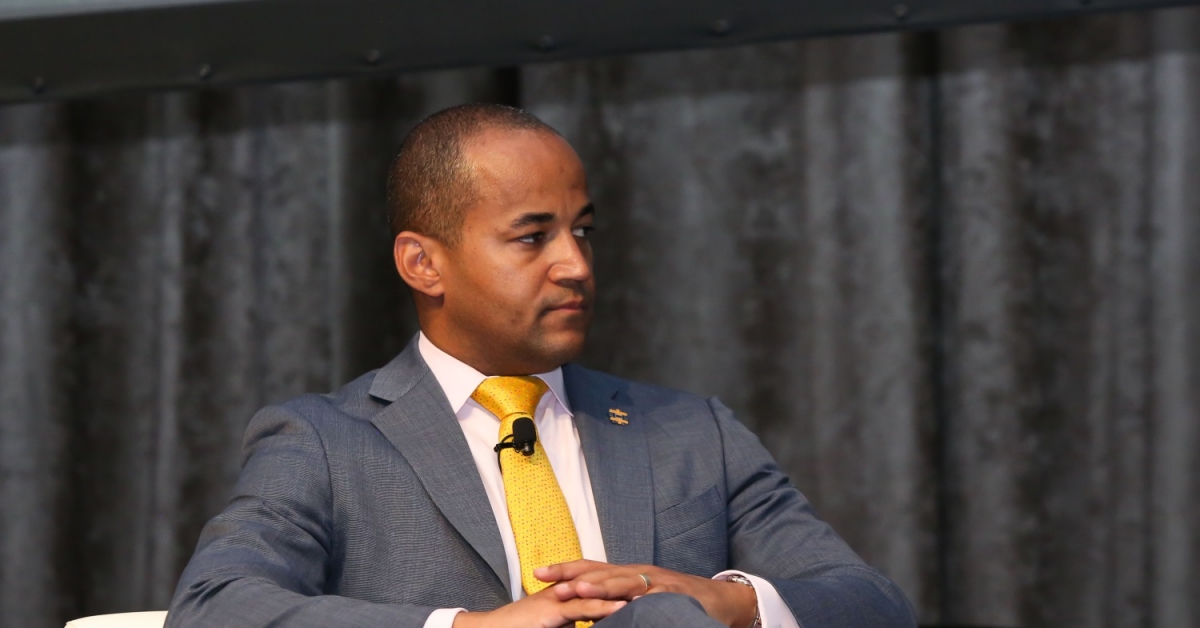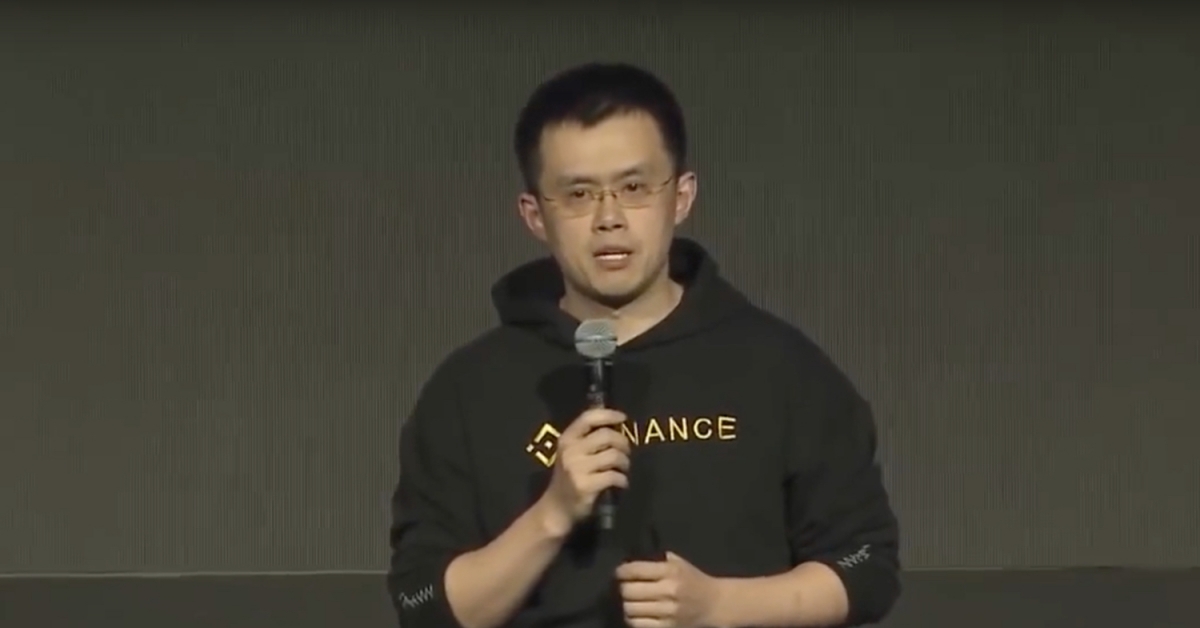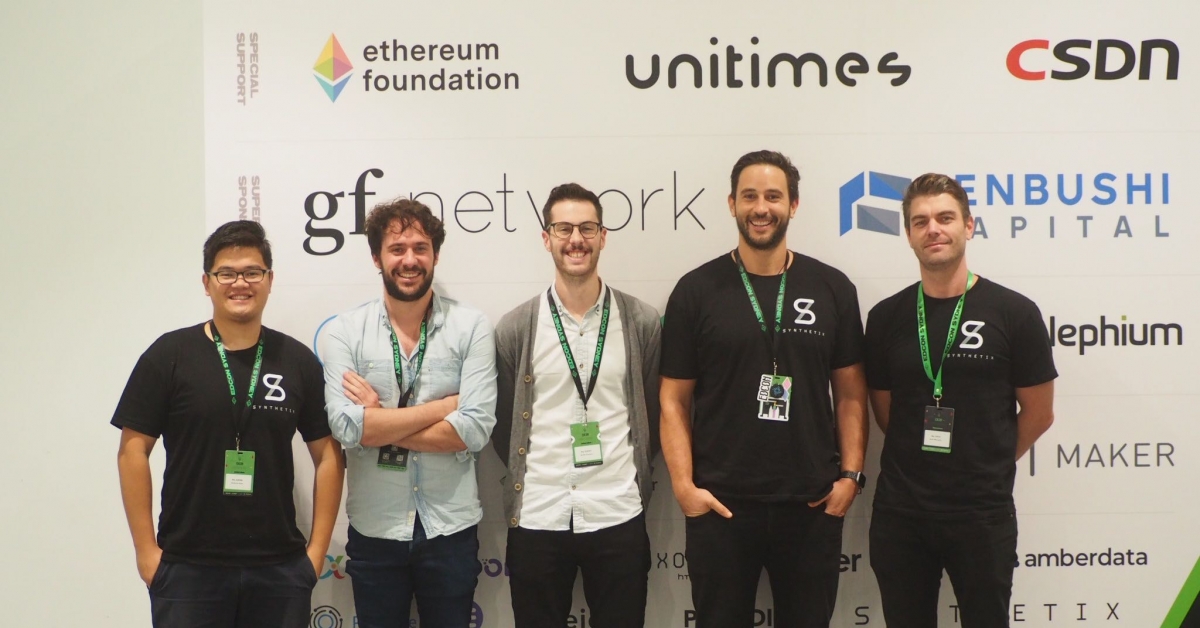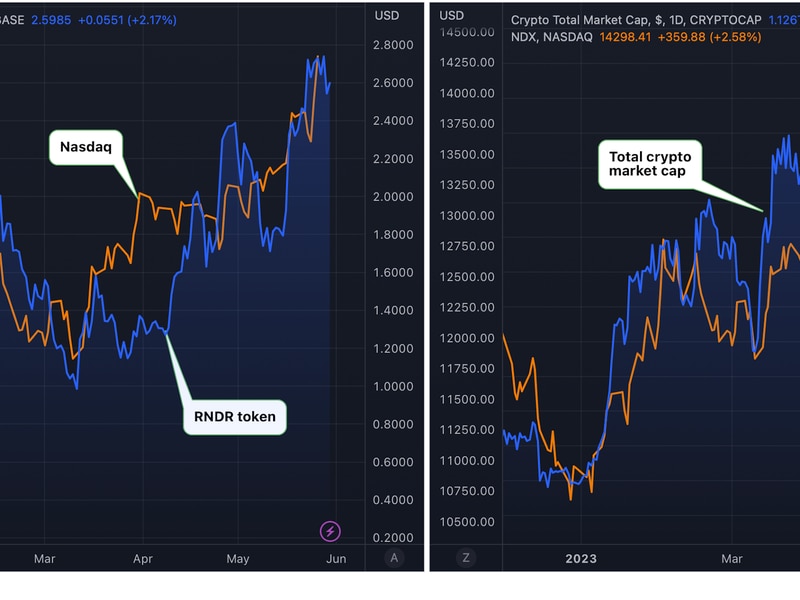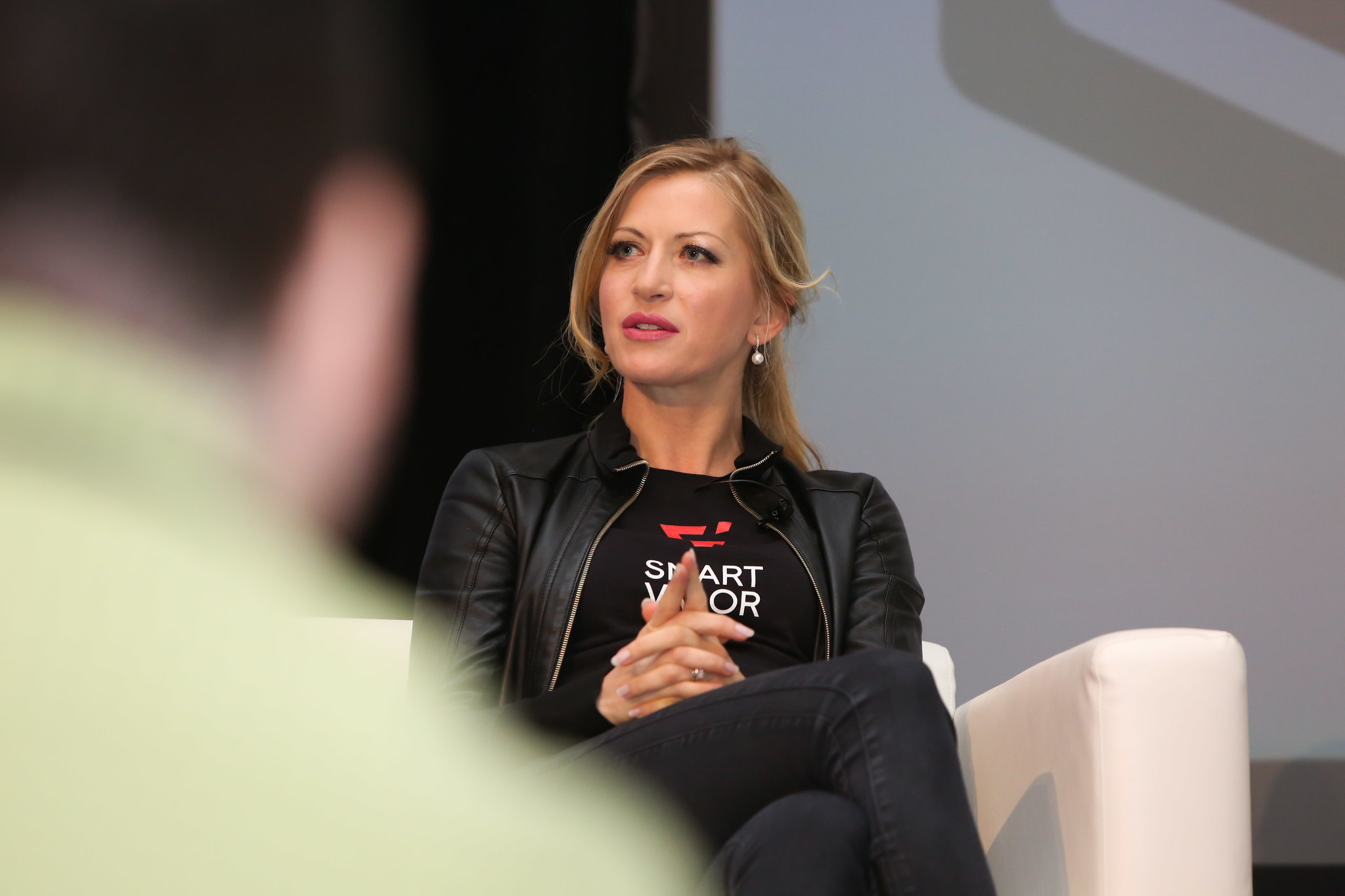Rune Christensen Explains Why He Wants to Remake Maker and Kill DAI
Although MakerDAO’s dai (DAI) might be the most successful decentralized stablecoin, last year founder Rune Christensen worried the project was teetering on the edge of collapse. So he set about coming up with a rescue plan.
Christensen’s proposal, now known as Endgame, is a massive expansion of the Maker project, which would see the release of new stablecoins, new ways to generate revenue and potentially limitless new business prospects through the creation of “subDAOs.”
CoinDesk sat down with Christensen for a wide-ranging interview to get a better sense of what’s coming down the pike as Endgame begins to roll out as early as this summer. We connected on May 17, the day Maker announced the coming release of two fully decentralized stablecoins, NewStable and PureDAI, which will eventually replace DAI, which has a market cap of over $5 billion.
So it’s a big news day for you guys.
Would you say the idea of launching a more decentralized stablecoin is a tacit acknowledgment that dai (DAI) should have always pursued decentralization first and foremost?
I mean, there’s mainly two approaches to decentralization in DeFi. One uses decentralization as a tool and the other is using it as sort of the guiding – I wouldn’t call it an ideology, but this underlying measure or the end goal itself.
What this announcement touches on is how these two things interact when using decentralization as a tool. If you’re thinking about someone building a product that’s useful for end users, then making it decentralized should be done for a specific reason like resilience and the ability to offer features.
Whereas when decentralization is your guiding ideology, then the product itself is pure decentralization. It’s two very different user bases and demographics, right? Our second user base is the OG Bitcoin and Ethereum types that value purity. But the vast majority of people, especially the more mature crypto gets, are more interested in useful products.
We especially see this with stablecoins. With the stablecoin trilemma it’s very hard to scale. If you have a $1 peg, you have to use real assets, which will always limit decentralization.
What are MakerDAO’s core values?
When Maker started it was during a time when all these early experiments and random ideas, which were mostly pointless [were floating around]. We wanted to try to build something useful to people with this technology. We’re really lucky that we had that perspective because it brought us to build a stablecoin, which, at the time, was kind of a boring idea that nobody wanted to do.
All that other stuff was cool, but you couldn’t use it unless there’s something stable. It turns out that a stablecoin is actually the most powerful business model; it’s basically been the product that has taken off and come out of blockchain technology that has actually impacted people. Big time, right?
Ultimately, the reason why we’re in the game now, the reason why we are basically making a lot of major changes is we’re basically trying to rethink from first principles. How to really build something useful that’s going to benefit people that also benefits from all the things you can do with decentralization.
Do you feel like you have a good sense of where Endgame will end up?
So the real basic concept of Endgame is really growth and resilience – that’s the overall goal. It has to be something that can grow exponentially, and as it grows it gets more and more resilient. The core idea of Endgame is to reach an end state of the system, so it doesn’t have to change anymore to the extent that’s possible. That kind of taps into the original Bitcoin values, this principle that decentralization is good, resilience is good, reliability is good.
But to give people what they want, you have to be able to adapt to the market. So that’s where subDAOs come into the picture; you enable the core of the system to reach this end state and become immutable. … That then allows for subDAOs to take care of all the complexity, adaptation and innovation that can attract new users.
That’s basically where the whole journey begins. We have to see what actually works in practice before we commit to something and follow market cues. It’s hard to predict everything in advance and then just build it exactly the way it was predicted. Usually that would not result in something that is actually very useful to people. It’s better to sort of figure out what people actually want and then move in that direction with it.
What do you make of the trend of DeFi brands, like Aave, for instance, expanding beyond their core category?
I mean, it’s the same sort of thing that is pushing us towards Endgame at Maker. So actually I think Aave’s attempt at decentralizing social media is a bit of an outlier. I think the more classic way this is happening is – Frax was the first project to articulate this, when they were talking about how every project ends up sort of doing all the code bases models, right? So if you’re DeFi, probably you’ll also be doing lending, you’ll be doing stablecoin, you’ll be doing exchange.
Maker also is doing a DEX, lending and stablecoins. The reason why this is happening is because the real challenge all of this is not really building the actual products, it’s having the governance layer in a DAO to maintain it all. So that’s where all the complexity and investment goes: having the ability to make the decisions that maintain something like that. If you already have that capability for doing it with a stablecoin, then you’ve already paid the majority of the cost and it’s very easy to add more features using the same governance rails.
And in fact, you kind of have to do that because it’s so expensive and difficult to maintain the governance. With Endgame, we’re taking this to the absolute extreme, because we’re building this extremely advanced, extremely sophisticated governance layer that we will be reusing again and again and again with subDAOs. That’s the economies of scale – experience and data is gained from all the different subDAOs.
Do you ever feel that MakerDAO governance is over-engineered?
I believe the problem is that it’s undere-ngineered.
The problem is the reason why you can simplify governance. I mean, that’s what we did originally, right? We built the technical layer, we built the protocol, and put a simple voting system on it and released it assuming that the free market would take care of it because the community will vote in their own best interests. But unfortunately, what actually happens in DAOs is politics.
So the problem is the assumption in any group setting – in any political setting, you could say – is that when somebody makes a proposal or makes an adjustment to a public system they’re doing that to benefit the system, right? That’s the game theory. … But the real game theory is that people will do whatever is best for them. Everybody wants to vote to give themselves money.
If you just have enough honest people, they can see that happening and then shut it down. The problem is you get this additional layer of politics where what happens is people will kind of argue over some proposal that’s supposed to be in the best interest of the whole system. They’ll say “it’s so great and I’m so selfless proposing this,” but there will be an underlying motivation. It’s incredibly difficult to tell when it is genuine.
Humans are just like that, right? They will be obfuscated and they will collaborate and you’ll have groups with shared interests. The point of all this is it is very, very complex – you can’t “solve” human politics. The only real answer to this is basically to put in place some hierarchy, a leader that you have faith in to decide who’s being honest.
The only alternative to that is to try to build out a transparent framework that contains all of that knowledge, like all the knowledge that a CEO typically has in a company. You want to have as much public data and knowledge as possible so when you pay for a particular engineering task, you know if you were overpaying and how to quality-check it. You can’t leave all those decisions up to voters because they’ll vote for, like, their own supplier that gets paid 10x market price. But you can’t figure out if that’s happening unless you actually have the data and these processes built.
In a sense, it’s an extremely challenging engineering effort where you have to build all these processes to be detail-oriented, because every single black box you leave anywhere in the governance system is like leaving a bug in a smart contract that a hacker can come and hack.
That’s the direction we’re slowly going in at Maker by building Atlas, which is sort of a big governance layer.
Do you think you would make a good politician?
No. I mean, like, I definitely have had to develop those types of skills to basically deal with the problem of doing stuff with DAOs. But I’m definitely not naturally – I’m, well, I’m not exactly a technical person in the sense that I’m not doing any of the code in Maker, but I’m definitely more technically minded. What do they call it? A shape rotator rather than a wordcel.
That’s funny. You can feel free to decline to answer, but do you have any sense of why those VCs collaborated to vote against Endgame?
Well, it was not all the VCs.
I think there were three prominent ones.
I think at that point, like everyone else, they were very disappointed with what had happened with the project because it had sort of taken off – it had grown a lot and then suddenly it lost all its revenue and had crazy expenses.
And then I think from their perspective, they probably just viewed Endgame as some kind of desperate sort of fever dream, right? Like, it’s already bad and now it’s gonna fail fully and their tokens are going to become worthless. And then they actually sold all their MKR when they failed to vote against it. Unfortunately for them, they sold right at the bottom.
Then what happened was you had this new generation of hedge funds and VCs coming in and buying up all their MKR. These were institutions that were explicitly very, very excited about Endgame, they bought because they actually thought this was a cool idea. And I think that’s what you want – the MKR did its job because you actually want voters to be aligned.
When exactly did you start thinking that you had to do Endgame?
It really all came from the problem of the politics I just talked about, right? The budgets. I saw what was happening, and then I started extrapolating and I realized it would get so much worse – like, the project would die. That’s where the idea of subDAOs came from, a way of starting from fresh so you can set the right direction, the right momentum, with the right knowledge.
You can’t just put people in a DAO, and then have the free market steer things. You have to really give them the data, give them the frameworks, give them the tools to move in the right direction where there’s interaction. And even when you do that, it will still fail sometimes. That’s the other thing, it’s a fresh start for communities that are specialized in particular areas so they can become more streamlined.
Spark will be a subDAO focused on DeFi innovation. And then there are other subDAOs that can be about gaming or financial inclusion by serving as a way to get yield for potential users, for instance, which is a huge crypto demographic that hasn’t really seen an advanced crypto product.
You get to make these bets on new communities that have a particular direction led by a group of people that believe in that direction. The other major thing is they’re allowed to fail. It’s designed so that if a subDAO fails, it doesn’t damage the whole thing, which is kind of a problem with Maker.
The last part is solving how to make growth really take off, because DAI was really only adopted by crypto natives. The branding was sort of quite random. So with Endgame, we’re rebranding to try to fix that. The ace up our sleeve that we have is decentralization. SubDAOs will function as an adoption funnel through tokens that offer yield to holders of the new stablecoin with new and better branding.
It’s exactly the same asset – the only question is how are you getting the yield for the DAI savings rate? It’s a bit like DeFi Summer, where yield farming was essentially risk free. So it’s a way to sort of get the growth, excitement, experience, and maintain its resilience as it grows so people are not losing the money. So you can really kind of just push it and adopt it.
How do you deal with the stress of leading one of the most important DeFi projects?
It’s really hard for me to explain how I dealt with it in the past because it was really crazy. The early days of crypto were so insane – unreal situations, crazy drama, crazy personalities, a lot of toxicity. The main way I dealt with it is that the more I tried to improve what we were trying to build – making something useful for people – the better things got. Gradually, things have just been getting better and better.
Even dealing with Endgame – this massive change – is nothing compared to the early days of Maker.
Are you still thinking about making an MMORPG?
I actually have a gaming company that’s building an MMORPG that I founded around the time the Maker Foundation wound down.
Being in Europe, are you at all concerned about the Tornado Cash verdict? I ask because the judge essentially said founders could be criminally liable for code they release that they suspect could be misused.
I think the problem with privacy technology is that it attracts a lot of bad guys and illicit use. There’s naturally a large illicit user base. But there are also way more legitimate users. It’s like a road, bad people use the roads, but the vast majority are regular people. It’s a big challenge, because we need privacy technology, right? We have a right to privacy, but these tools often end up as honeypots in a sense.
But obviously Maker has always focused on having good relationships with regulators because we want adoption by regular people. And we’ve achieved that. A lot of people use and benefit from the system, which makes it dramatically different from something like Tornado Cash.
Today’s announcement of a completely decentralized stablecoin detached from Maker wouldn’t have KYC though, by definition. It seems like prosecutors, when they can’t shut something down, try to put a person behind the code.
Yeah, but again it comes back to whether it has some kind of legitimate use. The point is if you’re making it easy to do bad things with this technology. There is no privacy on the blockchain, right? Everything is totally transparent. You have Chainalysis monitoring everything. Mixers thwart that. The best example of all is the banking system, because this is happening all the time at a much greater scale. You can be fully anonymous in crypto if you’re just smart enough. But in the banking system, it’s actually pretty easy because you just need to bribe a few corrupt bankers or something like that. It’s pretty straightforward. So the thing that would get risky for us, even though I think, again, that there is a moral obligation to figure out how to do this in a way that doesn’t just disproportionately benefit criminals, is to build a privacy solution into a decentralized currency.
It’s very hard to do that safely and without becoming a target. We’re definitely not going to build you know, native privacy into pure DAI or anything like that.
Do you want to do a quick round of Overrated/Underrated?
I think it has a ton of potential, but I’m really disappointed in basically almost everything. The amount of attempts and quality of the attempts is just very disappointing.
There’s something wrong with the culture – like, everyone’s just doing it for the money. And it’s pushing away real builders who are never going to touch the blockchain gaming industry. If you had the right people trying to do it, you could build some really cool things and we’ll get there. But the signal-to-noise ratio is crazy.
How much MKR do you own or control?
You can log onto Etherscan and find my wallet. It’s pretty easy.
Is there anything that you want to talk about?
I mean, the only thing that’s important to me right now is just how impactful launch season will be. There are many new things coming and it can be quite difficult to explain – there’ll be a new brand, new token, new app. There’ll be these different options if you’re a DAI holder that you can choose. It’s really, really powerful stuff.
We spent two years just distilling all the things that have been learned basically since the beginning of DeFi. And then we are sort of launching all the key aspects of those, but trying to make it simple and easy to use. The killer feature is yield farming, which I think will be relevant for a lot of people. But it’s hard to explain in advance that you will be able to save money with low risk, like you’re used to with stablecoins, but now you can get these very interesting and valuable tokens as you do it.
Yield farming is sometimes described as a marketing expense. Would you agree with that?
Yeah, I think that was kind of the old version of yield farming that others have done. But nowadays we have designed a system where the yield side actually makes the protocol sustainable. What was risky before, even if you were doing it with stablecoins, is that you were doing it in untested, brand-new smart contracts. So there’s gonna be a lot of technical risk. In our case, there is no technical risk – or very low technical risk – because it’s just as safe as all the other components of the Maker system. There’s financial risk, but with the new subDAOs and tokens there will be a lot of incentives.
In 10 years where do you think Tether will be?
I think it would probably be even bigger than it is today. They are reaching escape velocity and they’re not even paying any yield. They’re just growing and growing and growing because it’s so useful. The number one thing that makes a stablecoin useful is the network effect, right? People use tether because everyone else uses it, so they already have that flywheel.
We definitely hope to get to that point as well. But fundamentally the bed we’re making with Endgame is we can’t guarantee we get to that point at least within some timeframe we can control. So we are really focusing on the yield aspect so we have a growth driver that is independent from requiring this huge network effect.
But then we may be able to use this yield growth driver to build up a huge network of users and start to get this sort of compounding effect. It could be very successful and profitable, even if it was never used as a currency at all. Maybe it’s just like a savings account to tether or something like that.
This was great, good luck. I appreciate the candid responses.

